Hue, the ancient capital of Vietnam, captivates visitors not only with its majestic tombs and ancient pagodas but also with its peaceful villages where time seems to stand still. Nestled in the heart of the former capital, Phuoc Tich Ancient Village emerges as a living museum, preserving the cultural and architectural values of hundreds of years. Join “Du lịch khắp thế gian” to explore Phuoc Tich Ancient Village in Hue, to feel the timeless beauty and simplicity of the old Vietnamese countryside.
Overview of Phuoc Tich Ancient Village: National Cultural Heritage
Phuoc Tich Ancient Village is located in Phong Hoa commune, Phong Dien district, Thua Thien Hue province, about 40km north of Hue city center. Nestled beside the gentle O Lau River, Phuoc Tich carries the pristine and tranquil beauty of a traditional Vietnamese village. According to historical records, the village was established in 1470, during the reign of King Le Thanh Tong, initially named Phuc Giang village. During the reign of King Gia Long, the village was renamed Phuoc Tich, with the desire for accumulated blessings and preservation of good values for posterity.
With an area of approximately 49ha, Phuoc Tich Ancient Village is known as the second ancient village in Vietnam recognized as a National Cultural Heritage site in 2009. This title affirms the special cultural, historical, and architectural values that Phuoc Tich village is preserving. Coming to Phuoc Tich Ancient Village, visitors can not only admire the ancient Ruong houses and the village roads shaded by green trees, but also immerse themselves in the rich cultural space of Hue, experience the simple life of local people, and discover the unique features of the traditional pottery craft.
Today, Phuoc Tich Ancient Village has developed a variety of tourism services such as visiting Ruong houses, homestay accommodation, enjoying local cuisine, renting bicycles to explore the village, and experiencing pottery making. The enthusiasm and hospitality of Phuoc Tich people, along with investment in tourism services, have turned this place into an attractive destination, attracting more and more domestic and international tourists to explore and experience.
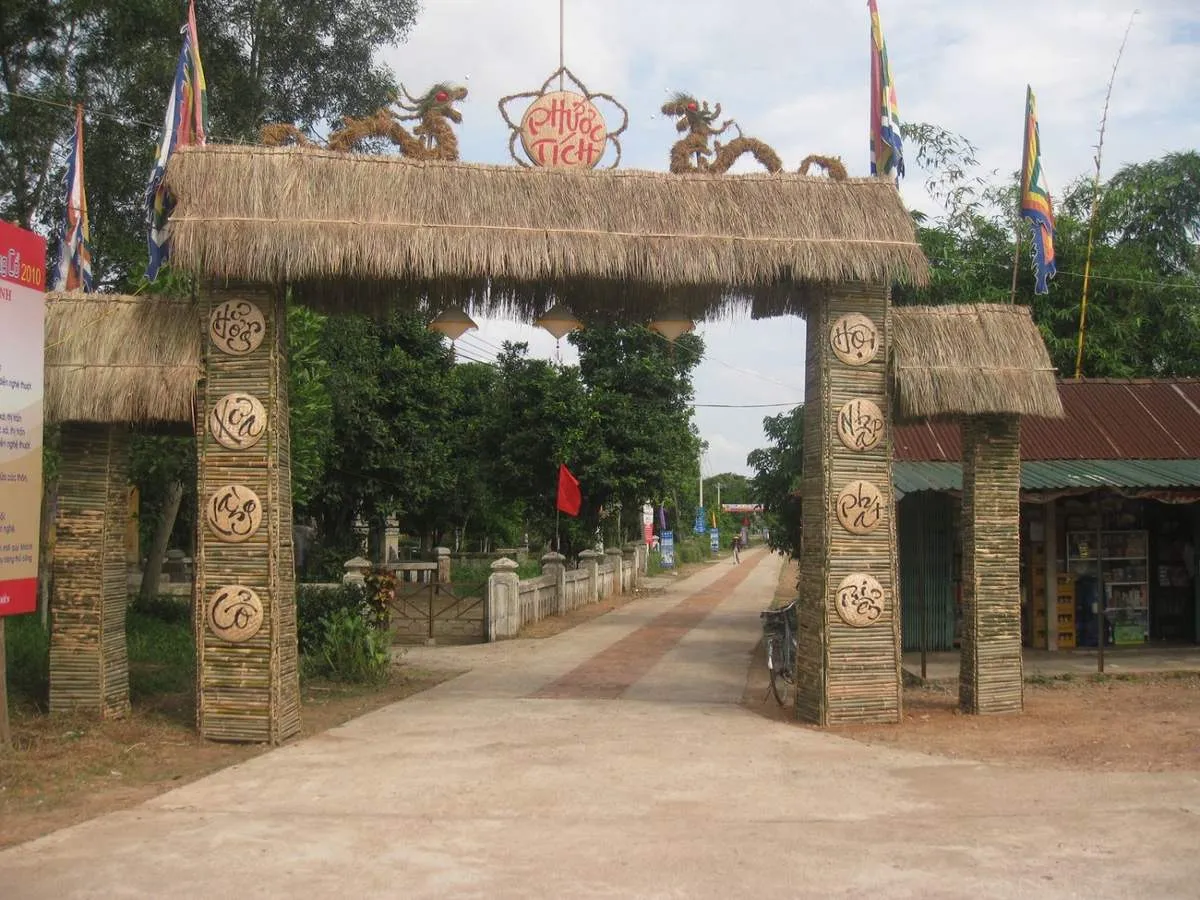
Journey to Phuoc Tich Ancient Village: Experiencing the Countryside
To reach Phuoc Tich Ancient Village, visitors can choose from various means of transportation from Hue city center. With a distance of 35-40km, the journey to Phuoc Tich takes about 40-60 minutes, depending on the means of transport and route you choose.
Traveling by motorbike or self-driving car: This is a popular means of transport for many tourists due to its initiative and flexibility in time. From the center of Hue, follow National Highway 1A northwards, near My Chanh bridge (Hai Lang district, Quang Tri), turn right onto National Highway 49B. Continue for about 1km across the bridge over the O Lau River, and you will reach Phuoc Tich Ancient Village. The road is quite easy and convenient, and you can combine sightseeing the countryside along the way.
Traveling by taxi or ride-hailing service: This is a suitable option for groups of tourists or those who want to travel comfortably and quickly. You can easily book a taxi or ride-hailing service in Hue to get to Phuoc Tich. However, the cost will be higher than by motorbike.
Traveling by bicycle: If you are a fan of exploration and want to slowly experience the beauty of the countryside, cycling is an interesting option. You can rent a bicycle in Hue and cycle along the village roads, enjoying the fresh air and peaceful scenery. However, the distance is quite far, so you need to ensure your health and travel time.
When you arrive at Phuoc Tich Ancient Village, to fully appreciate the beauty and space of this place, visitors should choose to walk or rent a bicycle to explore. Bicycle rental services are available in the village at affordable prices, making it easy for you to discover every corner of the countryside.

Exploring the Beauty of Phuoc Tich Ancient Village: Architecture, Culture, and Traditional Crafts
Unique Ruong House Architecture: Symbol of Hue Culture
Phuoc Tich Ancient Village is famous for its ancient Ruong houses, built in the traditional architectural style typical of Hue. Ruong houses in Phuoc Tich are not only living spaces but also cultural spaces, preserving the spiritual and historical values of lineages and families. The special feature of Phuoc Tich Ruong houses is the harmonious planning between architecture and nature. Each house has a large garden surrounding it, separated by rows of straight green tea hedges, creating a green and peaceful space.
Most of the Ruong houses in Phuoc Tich are over 100 years old, and some have even existed for over 200 years. The main building material is precious wood, intricately carved with patterns and motifs imbued with traditional culture. Phuoc Tich Ruong house architecture is often in the style of 3 compartments and 2 lean-tos, with a solid column and beam system, and a mossy yin-yang tile roof, bringing a sense of ancient and serene beauty. Visiting the ancient Ruong houses in Phuoc Tich, visitors will have the opportunity to admire unique architectural art and learn more about the history and culture of the ancient capital.
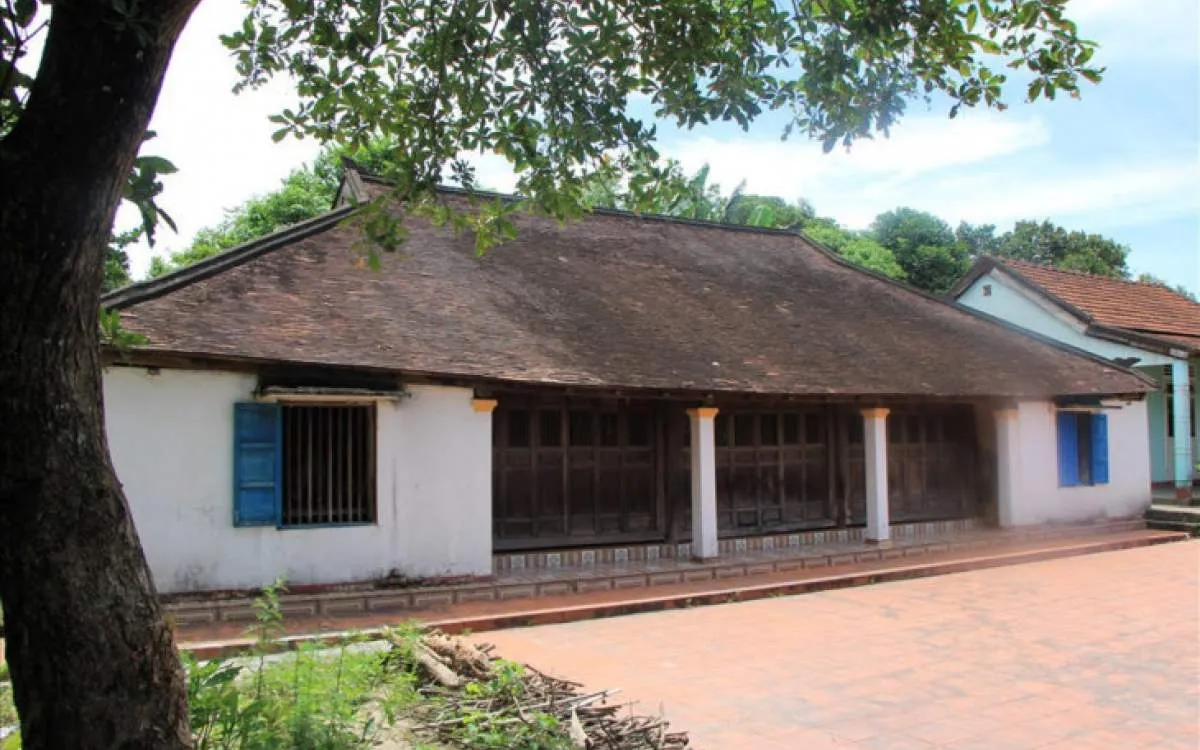
Spiritual and Cultural Relics: Place to Entrust Folk Beliefs
Not only possessing ancient Ruong houses, Phuoc Tich Ancient Village also preserves many places of worship imbued with spiritual and cultural imprints of the countryside. The most typical is Cay Thi Temple, also known as Ba Temple, considered the sacred place of Phuoc Tich people. The temple worships the Lady of the Land, the village’s guardian deity, and is the venue for important traditional festivals. Cay Thi Temple is prominent with a 500-year-old persimmon tree, casting shade over a large area, creating an ancient and solemn space.
In addition to Cay Thi Temple, the village also has Hien Linh Temple, which worships deities and bears traces of ancient Cham beliefs. Hien Linh Temple also preserves a Yoni symbol, a testament to the cultural exchange between the Cham and Vietnamese people in this land. Besides the temples, Phuoc Tich village also has communal houses and other pagodas and temples, contributing to a rich system of spiritual relics, reflecting the spiritual life and beliefs of the village community.
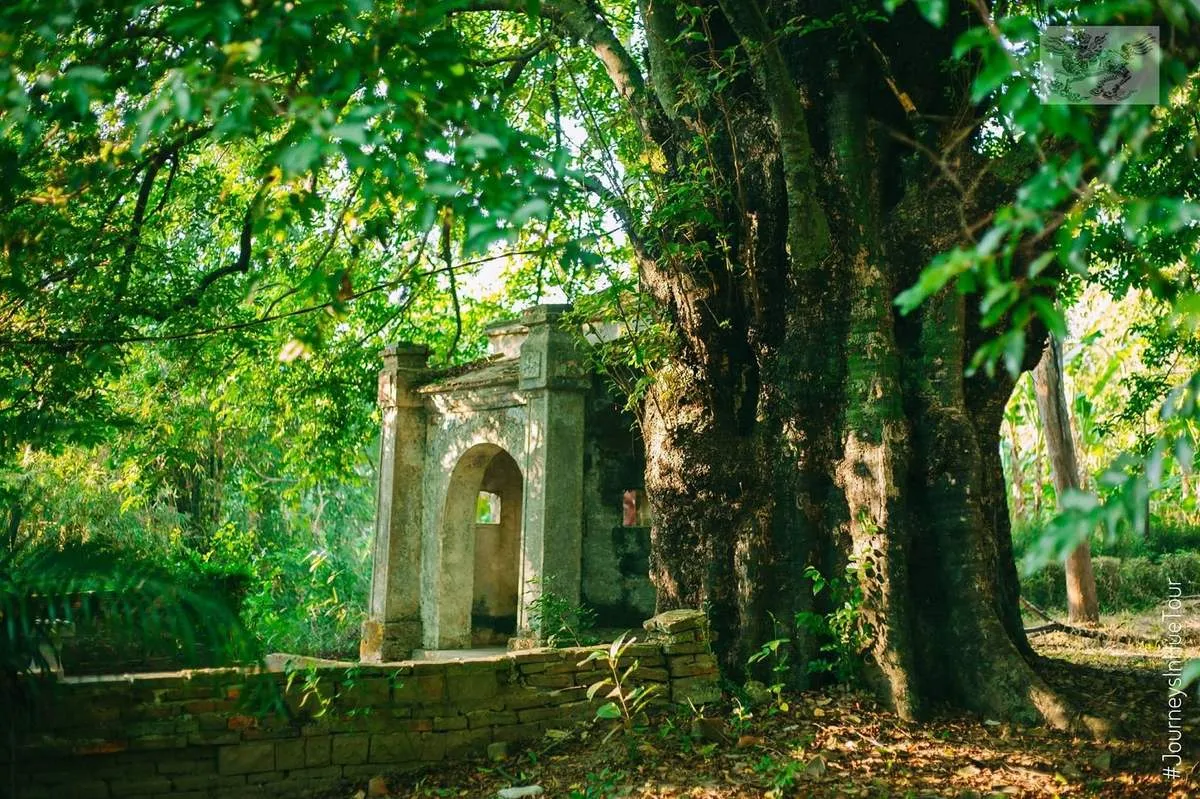
Phuoc Tich Traditional Pottery Craft: Vietnamese Land Essence
Phuoc Tich Ancient Village is also famous for its traditional pottery craft, which has a history of over 500 years. Phuoc Tich pottery is known for its durable quality, smooth gloss, and sophisticated patterns. Since ancient times, Phuoc Tich pottery has become a precious product, used to pay tribute to the king and serve the daily life of the people. The pottery making process in Phuoc Tich still retains traditional manual methods, from selecting clay, shaping, to firing. Clay is taken from the banks of the O Lau River, and through the skillful hands of pottery artisans, it becomes unique products.
The special feature of Phuoc Tich pottery is the technique of firing with rice straw in updraft and downdraft kilns. This unique firing method creates a distinctive color for Phuoc Tich pottery, usually dark brown or pale yellow, with unique natural cracks. Coming to Phuoc Tich Ancient Village, visitors can visit pottery kilns, learn about the manual pottery making process, and buy unique pottery products as souvenirs.
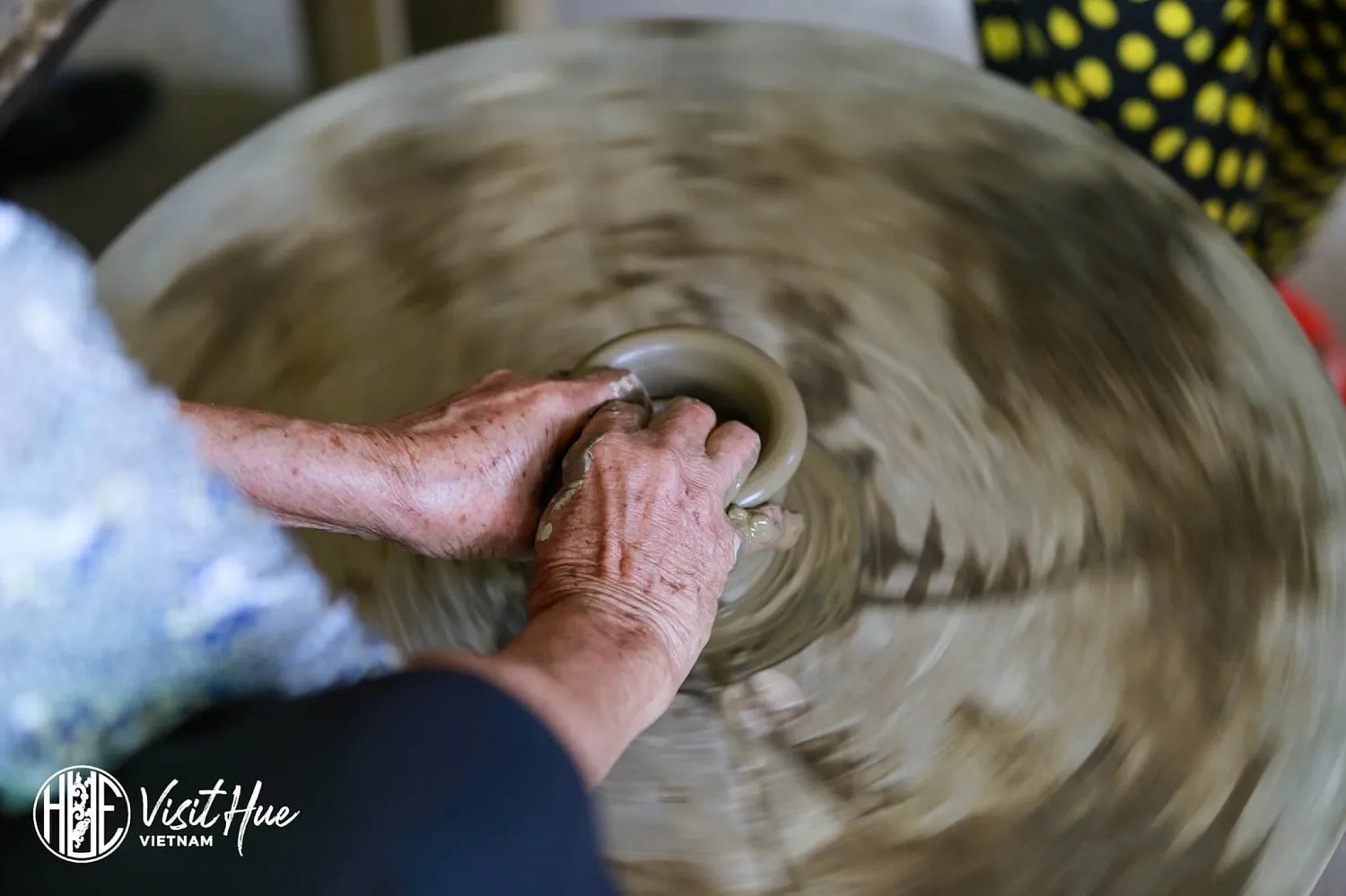
Natural Beauty and Simple Life: Peaceful Melody of the Countryside
Phuoc Tich Ancient Village is not only attractive for its architecture, culture, and traditional crafts, but also for its peaceful natural beauty and simple life of the people. The gentle O Lau River winds around the village, bringing fresh water and fertile alluvium, nurturing the lives of Phuoc Tich people for generations. Small winding village roads, shaded by green trees, lead to green garden houses and vast rice fields, creating a peaceful and poetic countryside scene.
In particular, the Phuoc Tich lotus pond in the summer is a must-visit destination. The vast lotus pond with white and pink lotuses blooming, spreading their fragrance, captivates visitors. The lotus pond is not only an ideal check-in spot, but also a place for villagers to relax and enjoy the fresh air. Coming to Phuoc Tich, visitors will immerse themselves in a slow, simple life, feel the friendliness and hospitality of the local people, and enjoy rustic dishes with the flavor of the homeland.
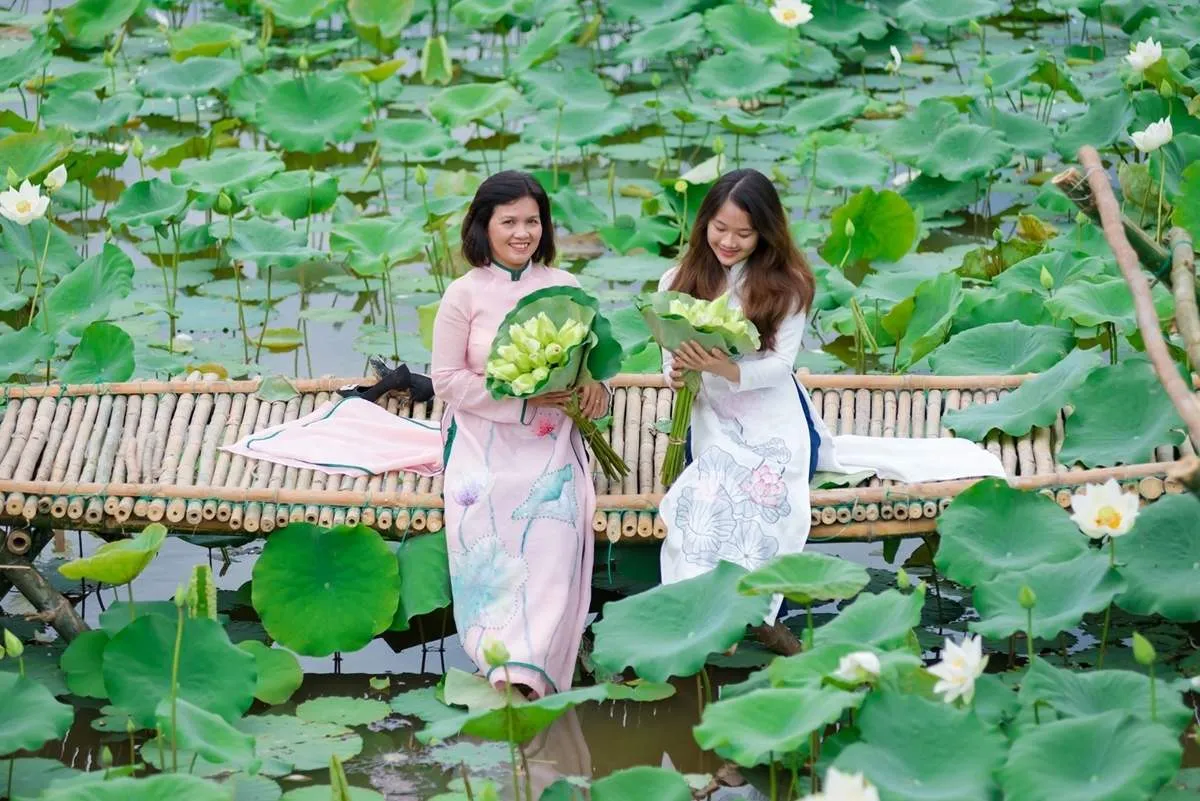
Phuoc Tich Ancient Village Travel Tips: Useful Advice
To have a complete and meaningful exploration of Phuoc Tich Ancient Village, “Du lịch khắp thế gian” would like to share some useful tips:
Ideal time to visit: You can visit Phuoc Tich at any time of the year. However, summer (May – August) is the time when lotus flowers bloom brilliantly, creating beautiful scenery. Autumn (September – November) with cool and pleasant weather is also an ideal time to visit.
Attire: You should choose comfortable, polite clothes, suitable for the cultural and spiritual space of the countryside. If traveling in the summer, you should bring a hat, sunscreen.
Sightseeing itinerary: You can spend about half a day or a day exploring Phuoc Tich Ancient Village. Early morning or late afternoon is the ideal time to visit, when the air is cool and peaceful.
Accommodation: Currently, Phuoc Tich Ancient Village has homestay services, allowing visitors to experience the life of local people. If you want to stay overnight, you can book a homestay room in advance.
Cost: The cost of visiting Phuoc Tich Ancient Village is quite reasonable. Entrance to the village is free, however, if you want to visit Ruong houses, you should pay an entrance fee of about 50,000 VND/house. Bicycle rental costs about 20,000 VND/bike. The cost of eating and buying souvenirs depends on your needs.
Conclusion: Phuoc Tich Ancient Village – A Must-Visit Destination in Hue
Phuoc Tich Ancient Village in Hue is not only a tourist destination but also a journey back to the roots, to the good traditional cultural values of the nation. This place brings visitors memorable experiences about the beauty of ancient architecture, rich rural culture, and the peace and friendliness of Hue people. If you are looking for a peaceful destination, away from the hustle and bustle of the city, come to Phuoc Tich Ancient Village, to feel the timeless beauty and find peace in your soul. Let Phuoc Tich Ancient Village in Hue become an unforgettable mark in your journey to explore the ancient capital.